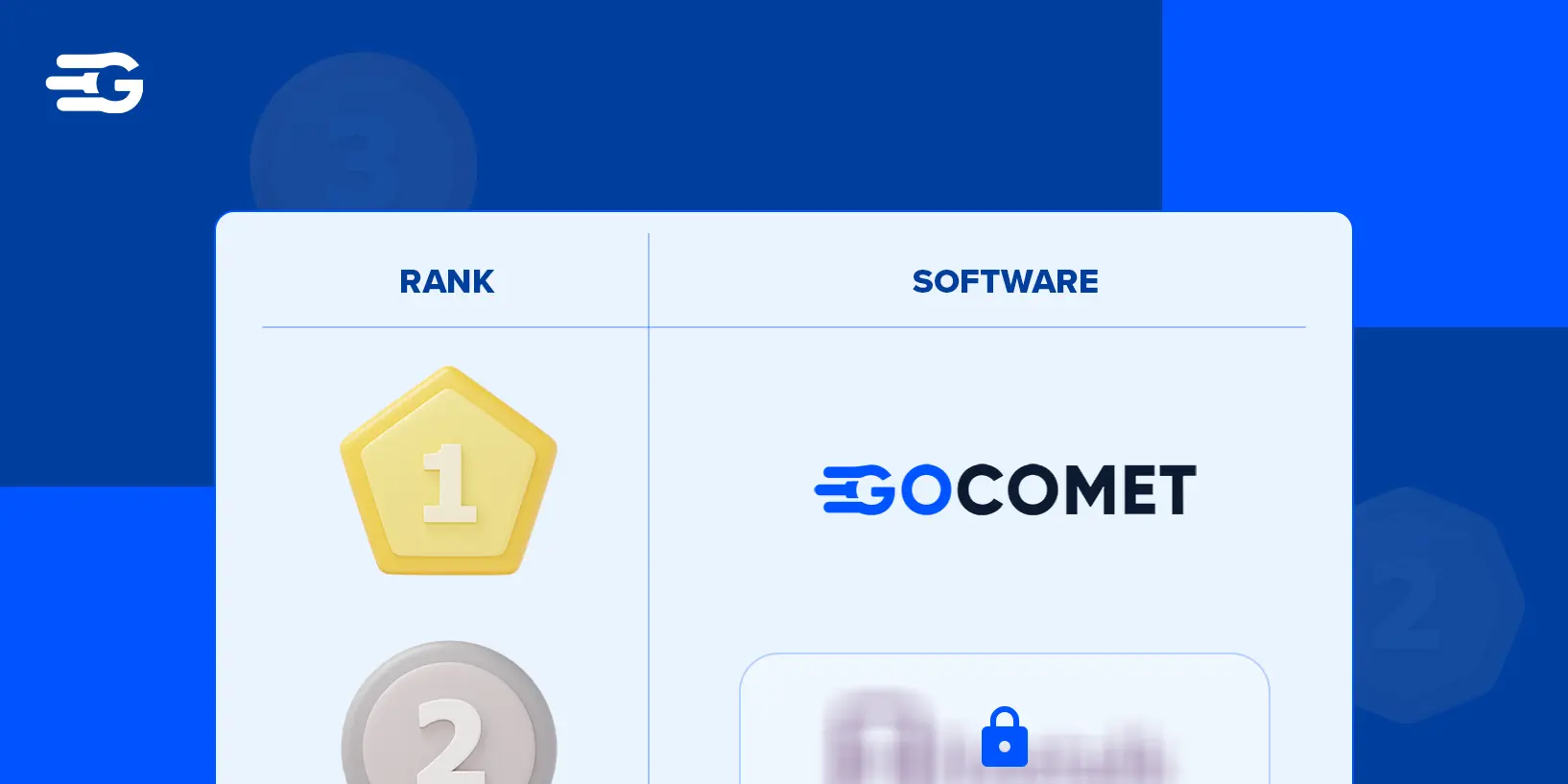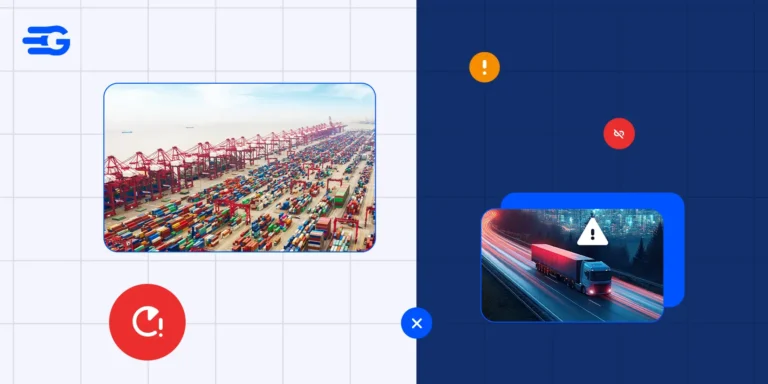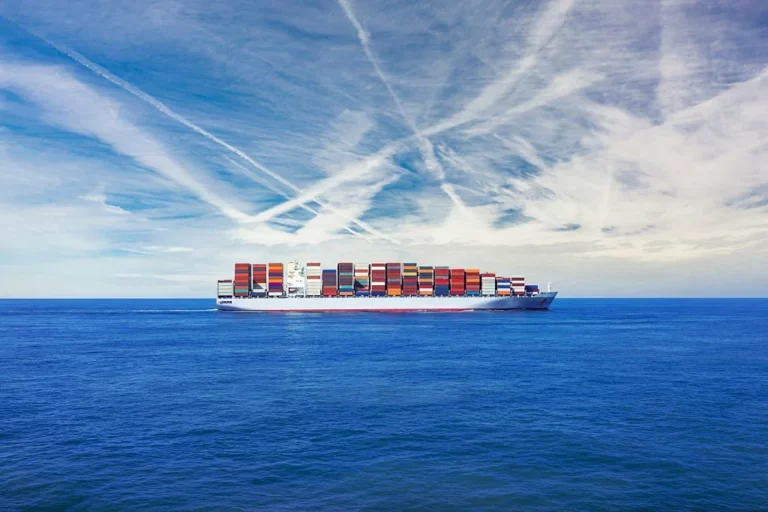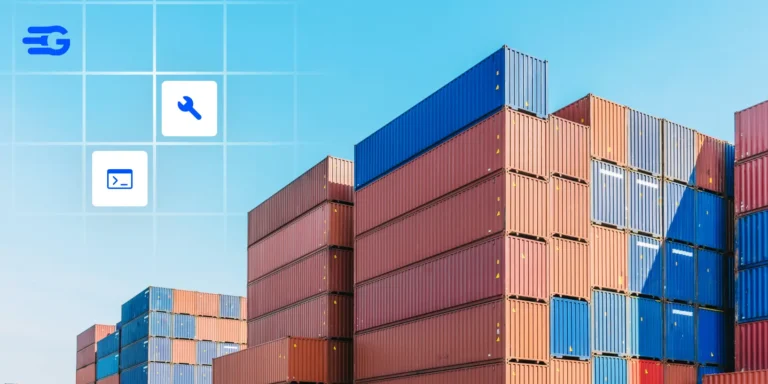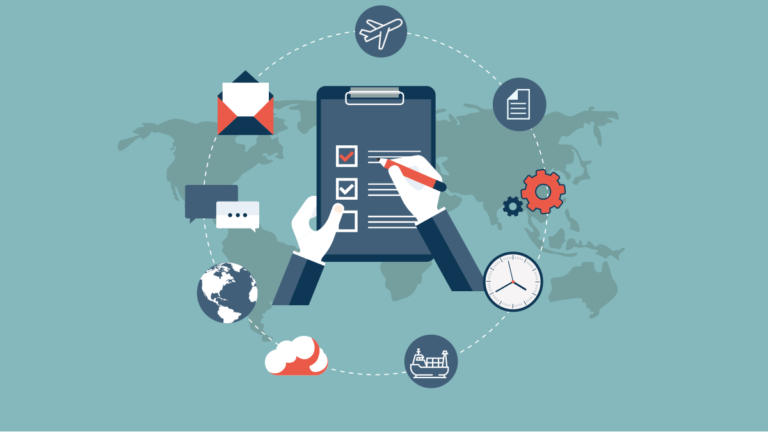13 Best TMS Software in 2025
Table of Contents
Choosing the right transportation management software (TMS) can make or break your logistics operations. The right TMS helps businesses cut shipping costs, improve visibility, and automate processes. But with so many options available, finding the best fit can be overwhelming.
This blog breaks down the 13 best TMS systems in 2025, highlighting their key features, limitations, and ratings to help you make an informed decision. Whether you’re looking for a cost-effective solution or a full-scale enterprise TMS, this guide covers the best options for your business.
Top TMS Software in 2025
| TMS Software | Best For | Pros | Cons |
| GoComet | Automating and optimizing freight procurement for any business size | – User-friendly – Real-time tracking – Collaboration tools | – No offline functionality |
| 3Gtms | Businesses with complex transportation networks requiring dynamic routing | – Improves supply chain visibility and control. – Automates processes like load planning and route optimization. – Offers real-time tracking and collaboration. | – Requires customization for multi-system integration. – Implementation can be time-consuming. |
| e2open | Improving supply chain visibility and collaboration across multiple partners | – Real-time visibility – Freight optimization – Stakeholder collaboration | – Limited integration with non-e2open systems – No free trial |
| Descartes | Flexible and scalable solutions for businesses of all sizes | – Automated freight tendering – Load planning – Real-time shipment visibility | – Advanced reporting only in premium plans – Steep learning curve |
| Blue Yonder | Enterprises seeking predictive analytics for logistics optimization | – Route optimization – Predictive analytics – Carrier management | – Requires IT support – Expensive customization |
| Manhattan | Large enterprises needing end-to-end visibility and control over operations | – Order consolidation – Real-time tracking – Mode optimization | – Limited appeal for small businesses – Steep learning curve |
| MercuryGate | Enterprises looking for scalable TMS solutions with advanced analytics | – Multi-modal support – Automated carrier selection – Real-time monitoring | – Extensive training required – Limited global scalability |
| Oracle | Businesses seeking integration with other Oracle products | – Seamless integration – Route optimization – Collaboration tools | – Expensive for small businesses – Dependency on Oracle ecosystem |
| Project44 | Businesses focused on enhancing supply chain visibility and real-time tracking | – Real-time tracking – Predictive analytics – Carrier connectivity | – No port congestion status data – Limited offline capabilities |
| SAP | Enterprises needing comprehensive logistics solutions integrated with SAP products | – Freight planning – Carrier collaboration – Transportation analytics | – Expensive for small enterprises – Requires SAP system integration |
| TMC – A Division of C.H. Robinson | Businesses looking for vast carrier network and logistics capabilities | – Extensive carrier network – Freight optimization – Live Shipment tracking | – Requires logistics expertise – Limited scalability for global operations |
| Trimble | Businesses seeking streamlined transportation operations | – Route optimization – Load planning – Real-time tracking | – Lacks advanced analytics |
| Uber Freight TMS | Businesses looking for modern TMS with load matching and real-time tracking | – Freight procurement – Load matching – Predictive analytics | – Limited customization – Primarily for mid-to-large enterprises |
Best Transportation Management Systems
1. GoComet
GoComet is a transportation management platform designed to simplify logistics by automating procurement, optimizing costs, and providing real-time shipment tracking. It eliminates manual processes, streamlining carrier selection, rate management, and contract handling to secure the best shipping rates without back-and-forth negotiations.
With live GPS tracking, estimated arrival times, and delay alerts, businesses gain complete supply chain visibility for ocean, air, and rail shipments, though road freight tracking may have limitations in last-mile accuracy.
The AI-powered dashboard analyzes carrier performance, freight spend, and transit times, helping businesses reduce costs and enhance delivery efficiency. Built-in collaboration tools, including shared dashboards and automated notifications, ensure smooth communication between carriers, suppliers, and logistics teams, preventing disruptions.
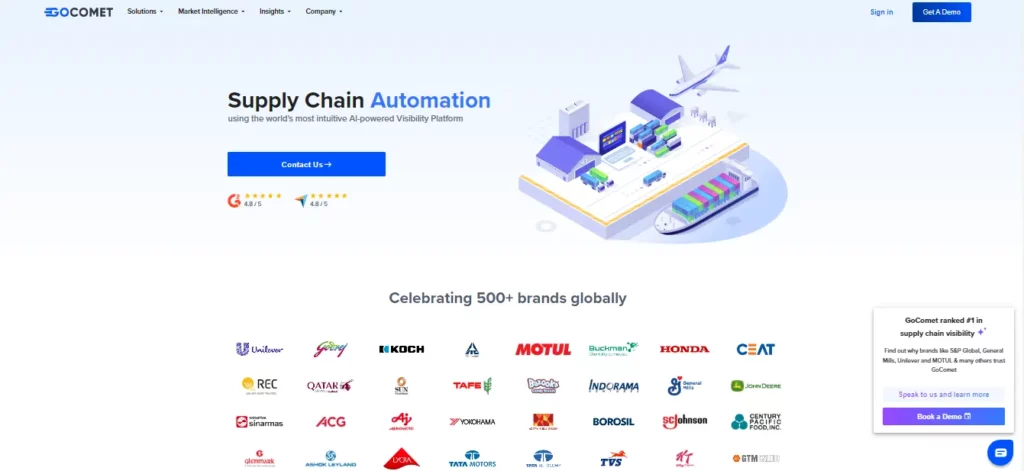
Ratings (as of March, 2025):
G2: 4.8/5
Gartner: 4.9/5
Testimonials:
“The best part about the Gocomet software is that all the interaction with the vendors via email, phone, etc. are completely eliminated. The communication is all done via software. The prime feature is the visibility of all the quotation and the cost heads are compared from each quotations from all the vendors.”
2. 3G TMS
3G TMS is designed for businesses managing complex logistics operations, making it a strong choice for enterprises handling multi-modal freight and high-volume shipments.
It optimizes routes in real time, adapting to traffic, weather, and shipment changes to improve delivery efficiency. The system integrates road, rail, air, and ocean freight, enabling seamless coordination across different transport modes from a single logistics platform.
3Gtms helps businesses reduce shipping costs by eliminating empty miles, maximizing load capacity, and streamlining carrier collaboration through automated workflows and real-time communication. While it offers advanced freight optimization, the setup process requires significant configuration, and the interface has a learning curve, making training essential for full efficiency.
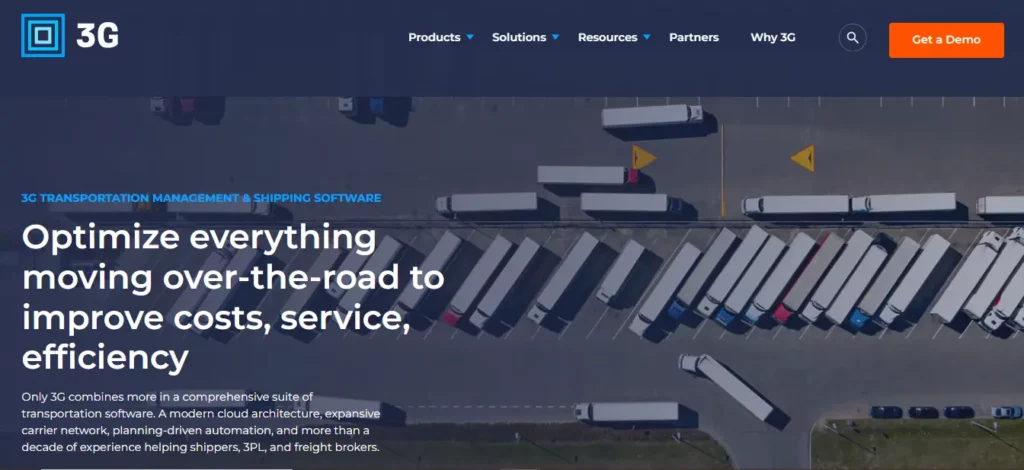
Ratings (as of February, 2025):
G2: 3.9/5
Gartner: 4.5/5
Testimonials:
“Excellent technology. changes and updates are getting difficult to update the system as the platforms grows. however it has been delivering great results for our organization.”
3. e2open
E2open is designed for businesses that need end-to-end supply chain visibility while optimizing freight operations. Unlike standard transportation management platforms, it connects transportation planning with broader supply chain processes, ensuring smooth coordination between suppliers, carriers, and logistics teams.
The platform uses AI-driven analytics to provide predictive ETAs, helping businesses plan shipments efficiently and reduce delays. It also automates freight invoice validation, identifying cost discrepancies to help cut transportation expenses.
With real-time shipment tracking across multiple transport modes and a centralized booking system, E2open enhances transparency and operational efficiency. However, it has limited software integrations, and its freight coverage is restricted to road, truck, and rail, making it less effective for businesses relying on ocean and air shipments.
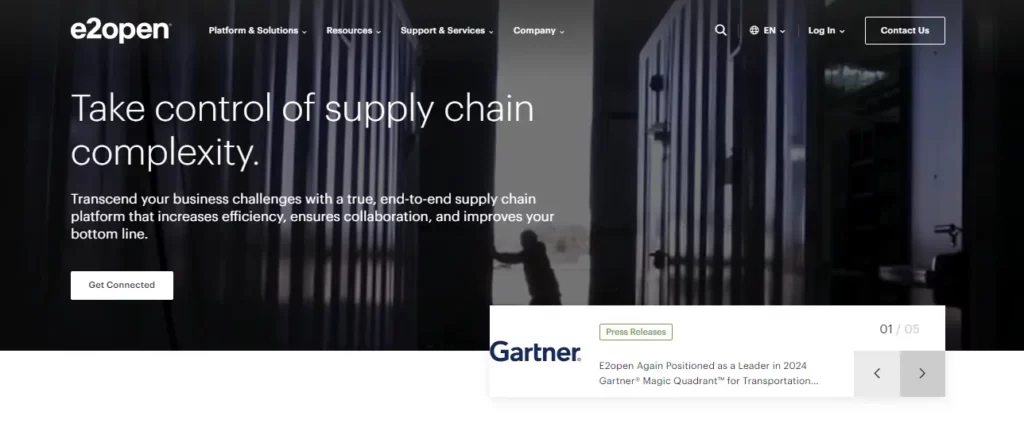
Ratings (as of February, 2025):
G2: 4.1/5
Gartner: 4.3/5
Testimonials:
“A system that can manage all your rates, carrier, and spend all in 1 system. System doesn’t incorporate ocean freight and air shipment. it’s only on the road truck or rail carriers.”
4. Descartes
Descartes is a scalable transportation platform designed for businesses managing high-volume shipments across domestic and international routes. It offers automation, real-time tracking, and route optimization, ensuring efficient freight movement without unnecessary complexity.
What sets Descartes apart is its compliance management tools, making it ideal for industries with strict regulatory requirements. The system centralizes carrier data, helping businesses negotiate better freight rates and choose the best shipping partners.
With lane rate consolidation, intelligent load matching, and automated invoicing, it streamlines decision-making and reduces administrative workload. However, while Descartes is highly adaptable, it may require custom configurations to align with specific business needs.
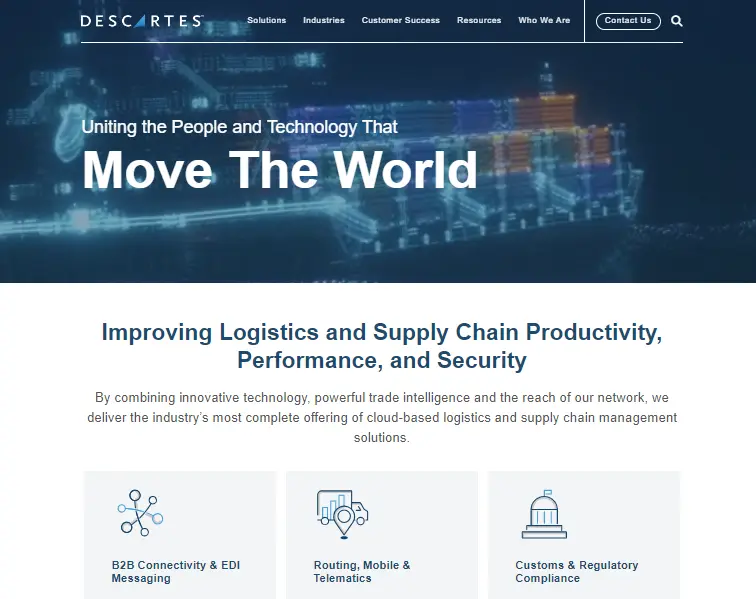
Key Features:
Ratings (as of February, 2025):
G2: 4.6.5
Gartner: 4/5
Testimonials:
“Its precise and fast to understand, You can track the shippment. Interface, can be adjusted to be more user friendly. I wish I could duplicate multiple loads at once instead of just one at a time. If this could be changed, it would help me save time when entering loads into the system.”
5. Blue Yonder
Blue Yonder is built for businesses that rely on AI-driven forecasting to keep their transportation operations efficient and cost-effective. The platform uses predictive analytics and automation to anticipate disruptions, minimize delays, and optimize shipments.
With smart route planning, automated freight auditing, and streamlined carrier management, Blue Yonder helps businesses reduce costs and improve on-time deliveries. Its seamless integration with warehousing and inventory systems makes it a strong choice for enterprises looking to unify their supply chain. However, some users report sluggish system performance and limited UI customization, requiring additional configuration for smooth integration with existing tools.
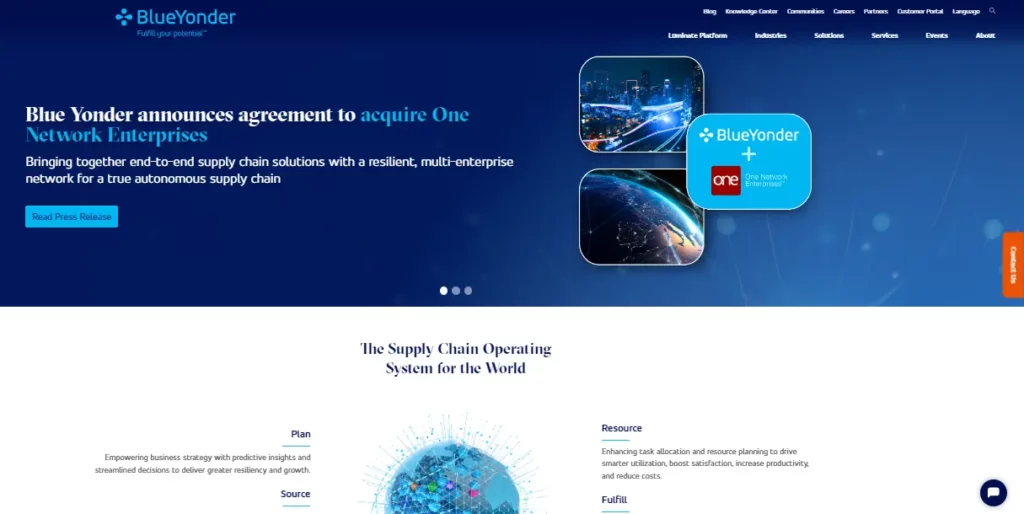
Ratings (as of February, 2025):
G2: 4.5/5
Gartner: 4.5/4.5
Testimonials:
“It is easy to integrate with the Blue Yonder WMS module, however, for other systems you will need to develop integration.”
6. Manhattan
Manhattan is designed for large enterprises managing complex, high-volume supply chain operations. Its AI-driven automation and real-time analytics optimize multi-modal transportation, ensuring seamless coordination between carriers, warehouses, and distribution centers.
The platform helps businesses reduce bottlenecks, cut costs, and improve efficiency with smart load planning, dynamic route adjustments, and scenario testing for carrier selection.
However, limited customization for smaller shippers and integration challenges with couriers and dynamic routing can impact usability, requiring additional configuration for smooth operations.
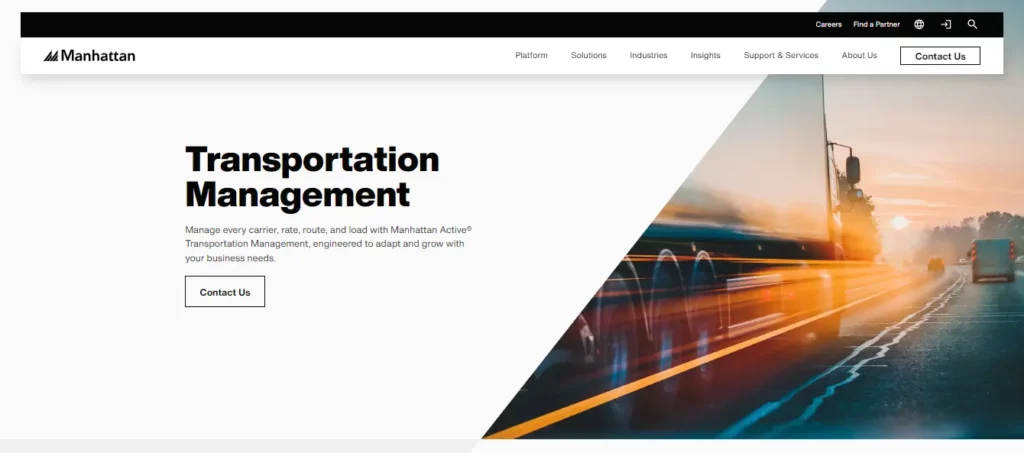
Ratings (as of February, 2025):
G2: 4.8/5
Gartner: 3.4/5
Testimonials:
“While the system is now operating and we continue to utilize additional functionality the process to implement the system left us wondering if we would ever see value from the system.”
7. MercuryGate
MercuryGate is built for businesses managing multi-modal logistics, from ocean freight and air shipments to trucking and rail. It offers real-time tracking, optimized carrier selection, and final-mile delivery solutions to improve efficiency and cut freight costs.
The platform’s data-driven approach enhances compliance tracking and visibility across the entire supply chain, making it a strong choice for enterprises handling complex transportation networks.
However, its outdated UI and complex customization can pose challenges, and limited open API support may restrict automation for international and intermodal logistics.
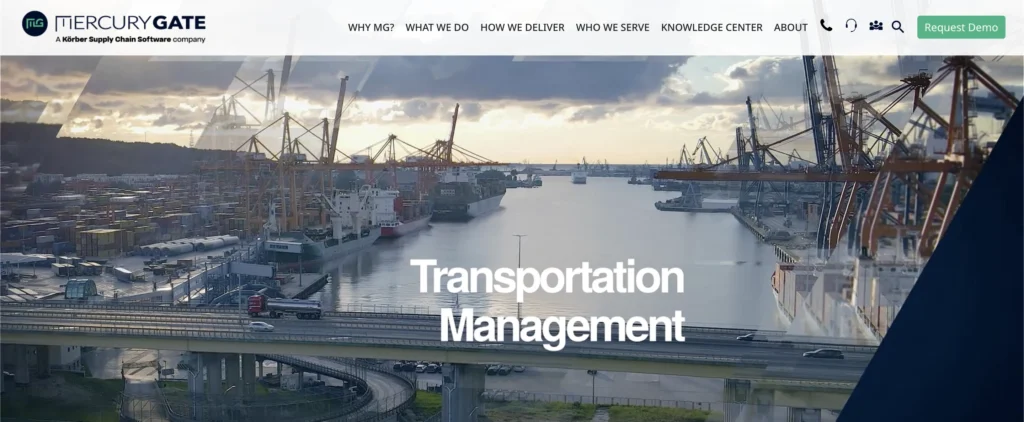
Ratings (as of February, 2025):
G2: 4/5
Gartner: 4.4/5
Testimonials:
“As a legacy TMS, MercuryGate has a good reputation for flexibility in use as well as a strong logistics understanding. The glaring weakness is in their lack of a modern API, making integrations and automations very difficult to setup.”
8. Oracle
Oracle Transportation Management (OTM) is built for enterprises needing a scalable, data-driven TMS with seamless supply chain integration. It centralizes freight management, route optimization, and carrier collaboration, helping businesses reduce costs and improve efficiency. With real-time tracking, AI-powered insights, and automated workflows, Oracle enables smarter decision-making for complex logistics operations.
However, its high cost makes it less suitable for small businesses, and optimal performance depends on full integration with the Oracle ecosystem.
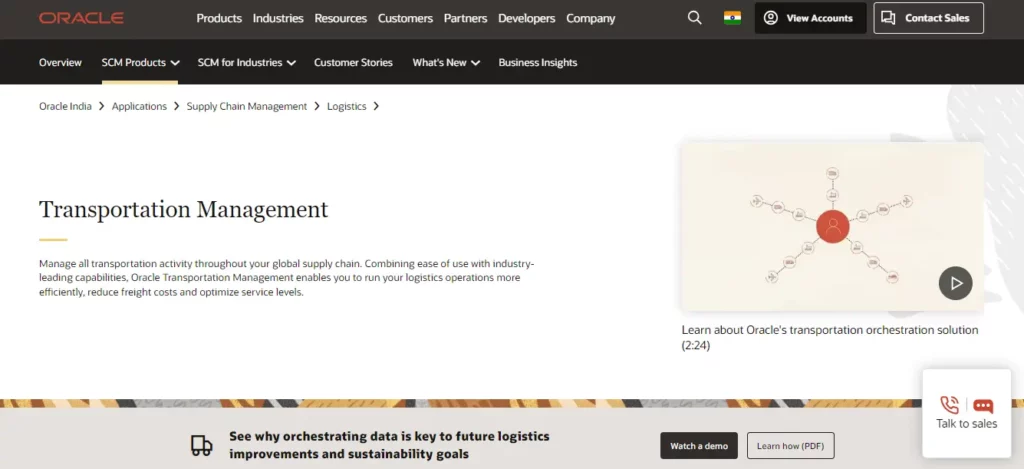
Ratings (as of February, 2025):
G2: 4/5
Gartner: 4.7/5
Testimonials:
“The best part is Security and the performance. As usual…every product needs enhancements…so this product for sure need some additional functionalities which would help different types of businesses.“
9. Project44
Project44 provides real-time shipment tracking across ocean, air, rail, truckload, LTL, and parcel freight, helping businesses reduce delays and improve supply chain efficiency. Its AI-powered predictive analytics offer accurate ETAs, enabling proactive issue resolution.
The platform integrates with existing transportation management systems, enhancing decision-making with detailed analytics and automation for billing and documentation. However, users report occasional data inconsistencies and slow customer support. The initial setup can also be complex, requiring time and resources to implement effectively.
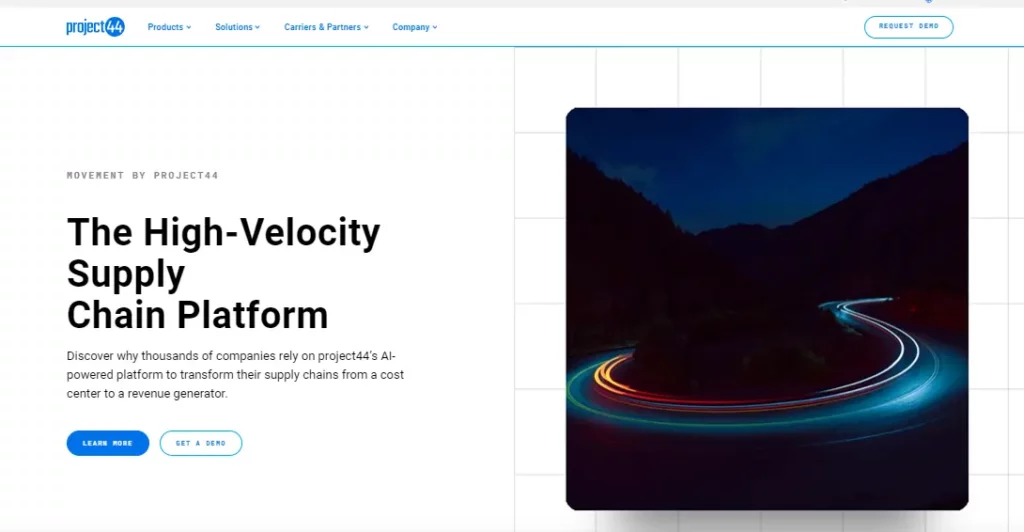
Ratings (as of February, 2025):
G2: 4.7/5
Gartner: 4.8/5
Testimonials:
“Last year, our review stated that we would like to have more fuzzy data accpeted, and that is now possible. There are constant improvements with the product. Our support rep is always helpful. Easier tracking for non-US carriers. Currently, if a carrier is not registered with the FMCSA we cannot track.“
10. SAP
SAP TMS is a freight management solution that integrates with SAP’s enterprise systems, making it ideal for businesses already using SAP products. It automates the entire shipping process, from quoting to contract execution, ensuring cost control and efficiency.
The platform offers real-time tracking, AI-driven insights for risk reduction, and interactive freight bidding to help companies secure the best rates. However, its customization options are limited, making it less flexible for businesses with unique transportation needs. Integration with non-SAP systems can also be challenging, requiring technical expertise and additional resources.
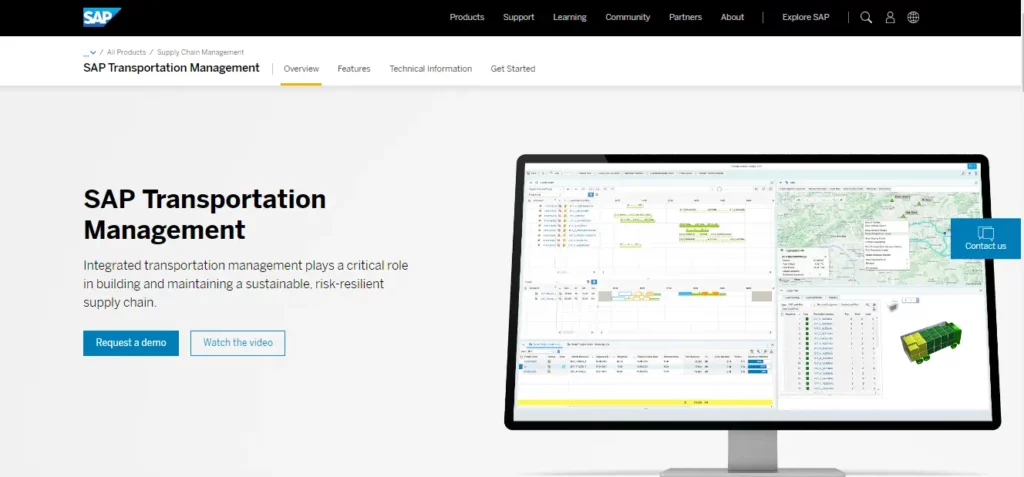
Ratings (as of February, 2025):
G2: 4.1
Gartner: 4.4/5
Testimonials:
“SAP has a broad set of solutions as an ERP Vendor, but the benefits of their scale are also a drawback when it comes to agility and service.“
11. TMC – A Division of C.H. Robinson
TMC, a division of C.H. Robinson, combines advanced logistics technology with a vast carrier network, making it a strong choice for businesses handling complex freight operations. It supports multi-modal shipping, provides real-time tracking, and helps companies optimize costs through data-driven insights.
The platform offers tailored solutions for both small and large businesses, with instant shipment quotes, dynamic carrier selection, and industry-specific expertise. However, its interface can be challenging to navigate, especially for new users, and some experience slow response times and system glitches, affecting workflow efficiency.
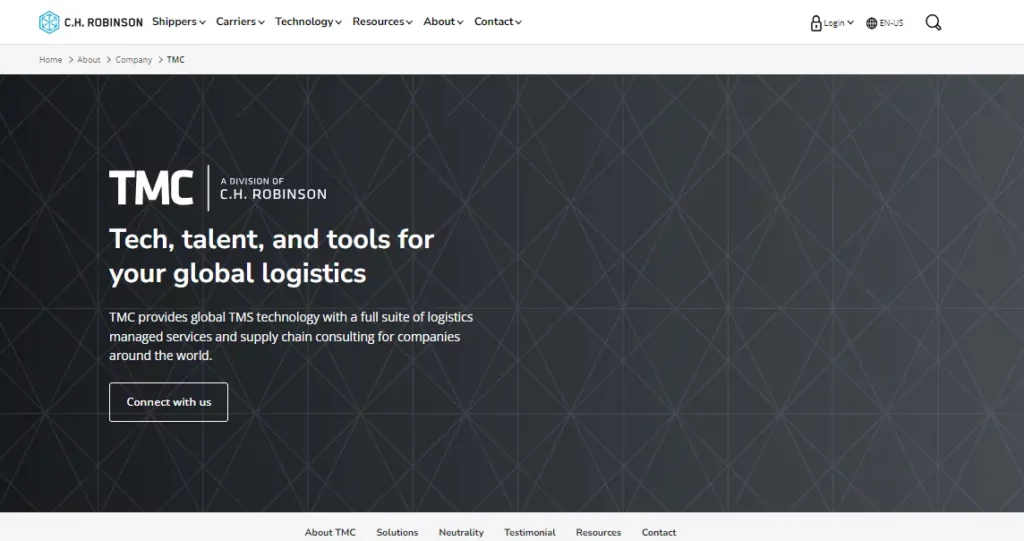
Ratings (as of February, 2025):
G2: 4.4/5
Gartner: 4.9
Testimonials:
“The company has always been helpful in solving problems and responding quickly. There is no other complaint really but the website can be kind of difficult at times to figure out what exactly you need to go to find something.“
12. Trimble
Trimble provides a cloud-based freight management system that streamlines route planning, load coordination, and shipment tracking. It enhances supply chain efficiency by connecting shippers, carriers, and brokers in real time while optimizing routes and fuel costs through intelligent algorithms.
The platform also includes tools for predictive maintenance, fleet reliability, and regulatory compliance. However, its outdated interface can be difficult to navigate, and its reporting capabilities lack customization, making it harder for businesses to generate detailed insights or tailor features to specific needs.
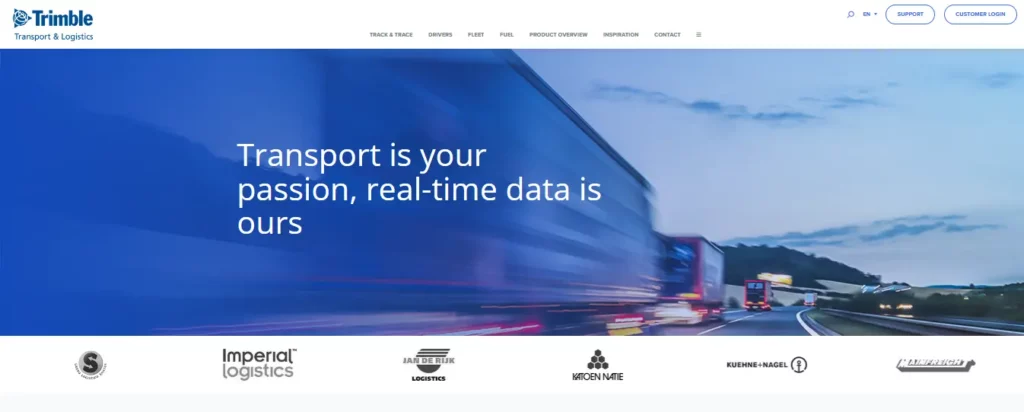
Ratings (as of February, 2025):
G2: 3.5/5
Gartner: 4/5
Testimonials:
“I like that I’m able to use it for several different subgroups, like operations and accounting. It is one way to keep all the information consistent. It’s almost just too much information, we are still learning about how to use the reports so we can decipher the information we want.“
13. Uber Freight TMS (formerly Transplace)
Uber Freight TMS simplifies freight coordination with AI-driven load matching, real-time tracking, and automated logistics tools. It provides flexible capacity management across different transportation modes, ensuring businesses can adapt to shifting demand.
The platform also emphasizes sustainability, integrating eco-friendly initiatives like autonomous trucking to cut emissions. However, it has limited customization options, making it difficult for businesses with specialized needs to tailor the system. Additionally, reporting delays and occasional data inaccuracies can affect decision-making and operational efficiency.
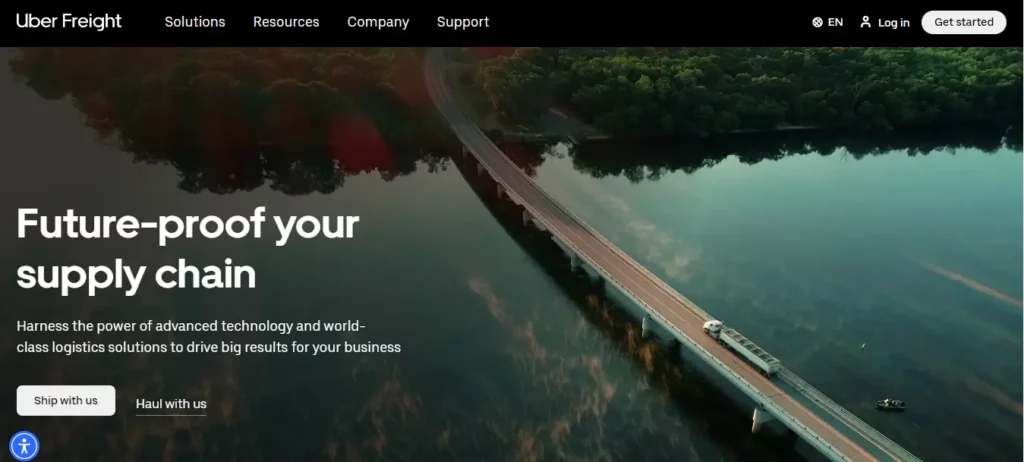
Ratings (as of February, 2025):
G2: 4.1/5
Gartner: 4.4/5
Testimonials:
“The tool works; however, the user interface is not ‘simple’. Too many fields need to be entered to pull data. Reports are not customizable.”
Final Words
Choosing the right transportation management system depends on business size, shipping volume, and operational needs. A good platform should offer real-time tracking, automation, cost optimization, and seamless integration with existing systems. Businesses should consider scalability, ease of use, and reporting accuracy to avoid inefficiencies.
While some platforms provide advanced analytics and AI-driven insights, others focus on fleet management and routing. Evaluating features, limitations, and pricing ensures the right fit. The best choice is one that reduces costs, enhances visibility, and streamlines logistics without adding complexity.
